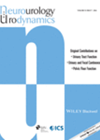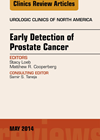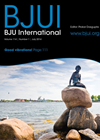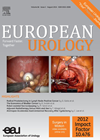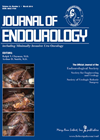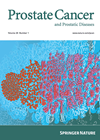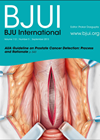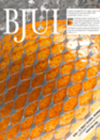
Journal Reviews
Beta 3 receptors in OAB
More and more is written on Beta 3 receptors in human bladders and their role in detrusor relaxation. This study from Japan investigated human Beta 3 AR gene which is polymorphic. One hundred women with overactive bladder (OAB) and 101...
Update on urodynamic equipment performance
This article is from the steering committee of the International Continence Society (ICS) and it gives a comprehensive account of what is required from modern urodynamic machines. It will be of interest to purchasers, designers and clinical users (doctors and...
Increasing PSA after negative prostate biopsy - solving the clinical puzzle
There are standard guidelines for first transrectal ultrasonography (TRUS) guided biopsy in a patient presenting with elevated prostate-specific antigen (PSA) or suspicious digital rectal examination (DRE) findings. Patients are generally warned before a TRUS biopsy in respect of a false...
Curing pure CIS with radical surgery: lessons learned
As carcinoma in situ (CIS) theoretically has no ability to invade or metastasise, performing radical cystectomy for CIS-only disease should be curative. In this single centre review over 37 years, 1964 patients undergoing cystectomy were analysed with 52 undergoing surgery...
Secondary bladder cancer following upper tract urothelial cancer
Upper tract urothelial carcinoma (UTUC) comprises <5% of all urothelial cancers. A certain proportion of patients with UTUC will develop secondary bladder urothelial cancer (BUC). This paper has retrospectively examined records obtained from several cancer USA population-based registries of more...
Adjuvant radiotherapy versus wait-and-see after radical prostatectomy
Optimum treatment modalities in prostate cancer continue to evolve, with debates at each stage of the evolution process, from focal therapy to radical treatment. In this randomised study, Wiegel et al. investigated the role of adjuvant radiotherapy following open radical...
Results of HoLEP in patients with prostate cancer and LUTS
Holmium laser enucleation of the prostate (HoLEP) is recommended for the management of benign prostatic obstruction. With similar functional outcomes and less morbidity compared to transurethral resection of the prostate (TURP), it has become a useful tool in the armament...
Comparative effectiveness of radical prostatectomy and radiotherapy in prostate cancer
Despite prostate cancer being one of the most commonly diagnosed cancers worldwide, there remains a need for high-quality evidence regarding the optimal treatment choice. In this large population-based cohort study, using the PCBaSe Sweden dataset, Sooriakumaran and colleagues identified patients...
Intermittent vs. continuous hormonal therapy for metastatic prostate cancer
Continuous androgen deprivation therapy (cADT) is the standard management for metastatic prostate cancer (mPCa). Intermittent androgen deprivation therapy (iADT) is sought to have better quality of life (QoL) and adverse events profile during off-treatment period. This multicentre European randomised study...
The EP2 receptor – a novel target for prostate cancer?
This basic science paper sets out to evaluate the effects that celecoxib, a selective cyclo-oxygenase-2 (COX-2) inhibitor, have on prostate cancer cell lines and evaluated the mechanisms behind these effects. COX-2 induces the production of prostaglandins, which promote cell proliferation...
Reducing the burden of NMIBC: outpatient laser management in morbid patients
With non-muscle invasive bladder cancer (NMIBC) posing a significant burden on urological departments, alternative ways of safely and effectively managing these patients with a minimally invasive approach is desirable. As rates of recurrence are high but progression rates low, and...
Comparative effectiveness of nephron sparing surgery vs ablation
Nephron sparing surgery (NSS) and minimally invasive modality of thermal ablation have attracted great attention as an alternative surgical treatment to radical nephrectomy (RN) for renal tumours <4cm. High quality evidence comparing disease specific survival (DSS) is lacking. This issue...

